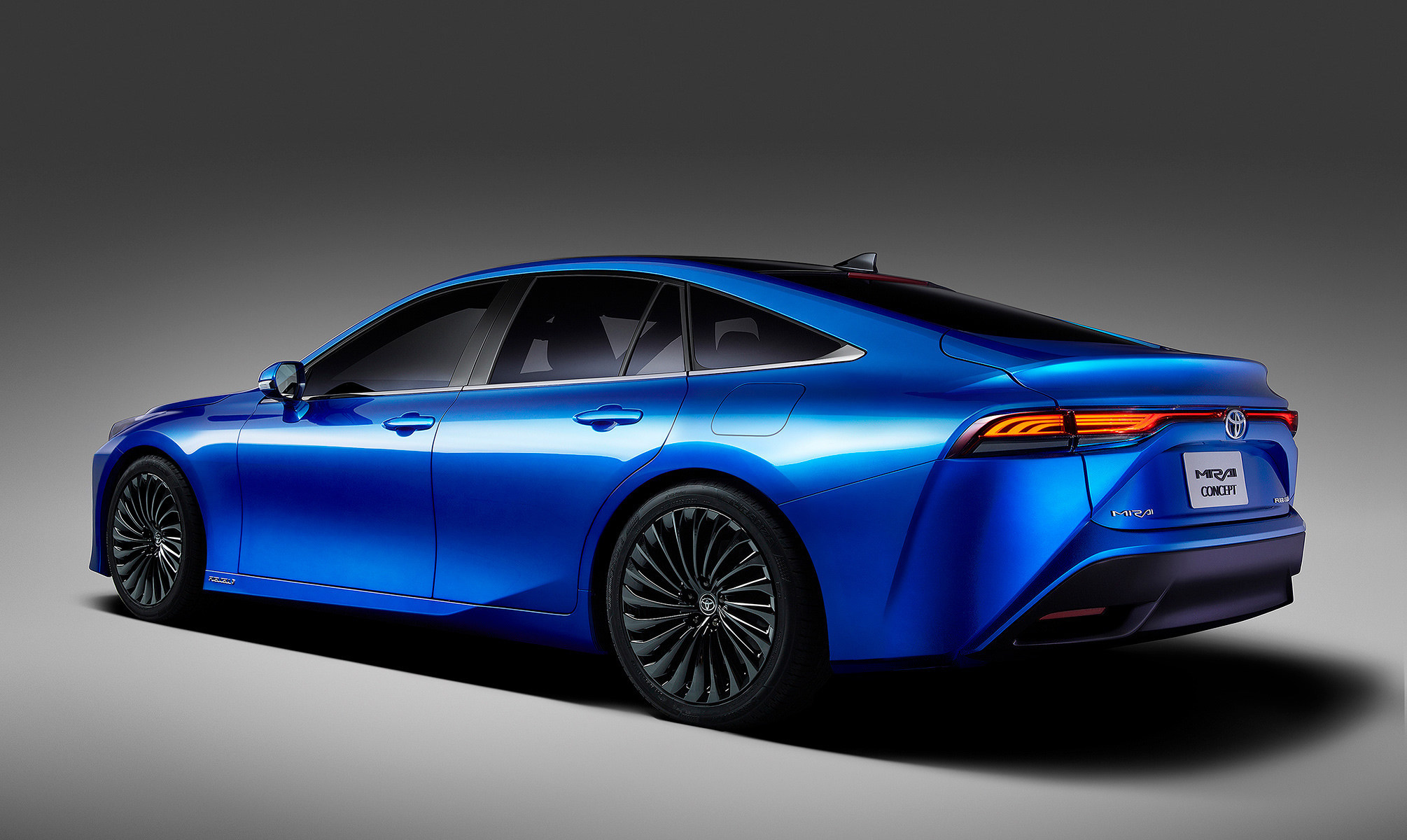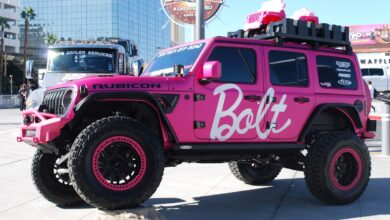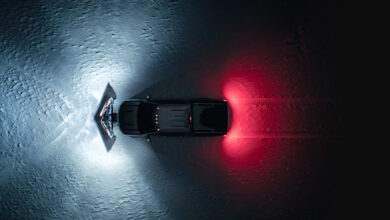Coupe-Inspired Design Modernizes Toyota Hydrogen-Fueled Concept

Toyota put the auto industry on the road to electrification in 1997 with the first Prius hybrid. Then, in 2015, it debuted the Mirai, the first production hydrogen fuel-cell electric vehicle (FCEV) offered for sale to retail customers in North America.
Now, Toyota has revealed the second-generation Mirai, rebooted as a premium sedan with cutting-edge design, technology and driving performance.
The Mirai is based on Toyota’s premium rear-wheel drive platform and debuts a dramatic yet refined coupe-inspired design with improved passenger room and comfort, according to the company. The second-gen Mirai will go on sale in late 2020 and will deliver a significant evolution of Toyota’s hydrogen FCEV powertrain technology and offer a critical look into the future of Toyota’s lineup.
The dramatic change in design also signals a new driving experience from Mirai (which means future in Japanese). A targeted 30-percent increase in range is achieved by an improvement in fuel cell system performance and increased hydrogen storage capacity, Toyota notes. Additionally, the new Mirai will offer a more powerful, engaging and even quieter driving experience than its forerunner.
“We have pursued making a car that customers feel like driving all the time—a car that has emotional and attractive design appeal, as well as dynamic and responsive driving performance that can bring a smile to the faces of drivers,” said Yoshikazu Tanaka, chief engineer of the Mirai. “I want customers to say, ‘I chose the Mirai not because it’s an FCEV, but because I really wanted this car, and it just happened to be an FCEV.’”
At its core, the Mirai is an electric vehicle, but it never needs to be plugged in to recharge. An FCEV generates its own electricity onboard from hydrogen and oxygen, with water as the only tailpipe emission.
A fill-up takes about five minutes at an SAE-conforming hydrogen fueling station in California or Hawaii (with stations also planned for the Northeast and other areas).
Toyota is working to develop a line of battery electric vehicles (BEVs) and includes FCEVs in its electrification roadmap. Toyota projects that fuel cell electric technology will one day be as common as the company’s hybrid electric technology.
ELECTRIFYING STYLE
The second-generation Mirai is built on a rear-wheel drive platform—a major departure from the original front-wheel drive version in terms of design. The new platform allows for a highly rigid body that is lower, longer and wider, the company stated, with a bolder stance accentuated by available 20-inch alloy wheels.
“The design is more aerodynamic, yet also emotionally evocative without being aggressive; zero-emissions doesn’t have to mean dull,” the company noted.
The new Mirai’s clean, modern profile was inspired by coupes, yet the new design is also more approachable than before. By taking advantage of the new platform, there’s more interior space which allows for five passenger seating for more family flexibility.
Accentuating the new Mirai’s smoother, more sculptural form is a brand-new blue color never before featured on a Toyota, which achieves its brightness and deepness through a multiple-layer painting process.
The new Mirai’s interior matches the refined tone of the exterior, its clean and modern layout infused with a hint of futurism without appearing off-putting. Drivers of current conventional luxury models will feel immediately familiar behind the wheel of the new Mirai. To that end, Toyota made the cabin even quieter, enhancing the luxurious ambience.
The simple, flowing lines of the dash neatly integrate a higher level of user tech in the new Mirai, including a standard 8-inch digital combination meter and available digital rearview mirror that displays images from a rear camera. The standard Toyota Premium Multimedia system, which uses a 12.3-inch high-resolution TFT touchscreen, includes navigation and a 14-speaker JBL sound system.



